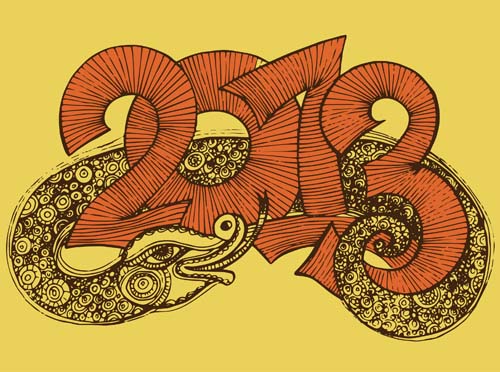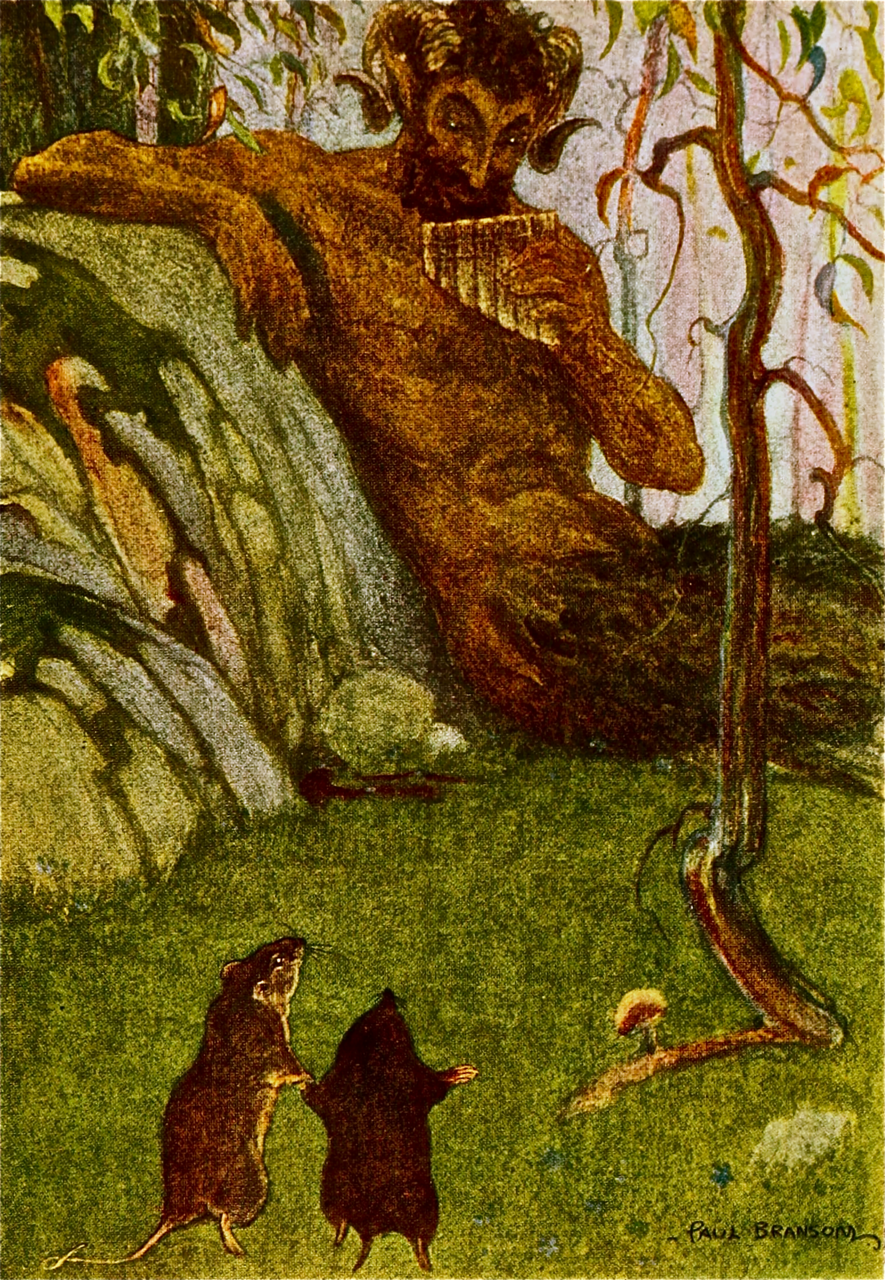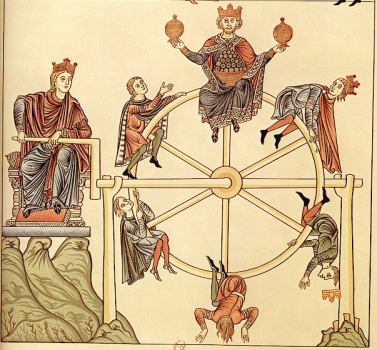Orca Bellona! Heavencry at earthcall, etnat athos? Extinct your vulcanology for the lava of Moltens!While the Winter Solstice has long since come and gone without the obvious mass transformation for good or for ill that many were expecting, it would be hard to deny that the world is going through an unprecedented transition. Everything remains on the edge. None of the tensions felt by people across the globe have been resolved.
2012 is over, but in a sense "2012" has not yet happened. 12/21/12 provided a sort of temporal anchor. This date may have represented a change in everything, but before it actually arrived it was comforting to know that we could at least grasp onto the date itself. Now that it has passed we are left flailing. Now "2012" could happen at any point. At every point. Unexpectedly. Like a Thief in the Night.

This blog has explored how certain unsettling synchronicities surrounding the horrendous events of Sandy Hook, happening a week before the Solstice, have provoked perhaps a threshold number of people to question the very nature of reality. Most still blame some sort of conspiracy, which cannot be ruled out, but increasingly many suspect something far stranger and deeper.
The appearance of "Sandy Hook" in Dark Knight Rises as the location within the Gotham City area where Bane would begin his campaign of terror is enough to make even the most hard-nosed "skeptics" momentarily scratch their heads. Either we dismiss this as mere coincidence or we take a deep dive down the rabbit hole. We dive.
Monomythic
The shooting at Aurora happened on the opening night of Dark Knight Rises. What film opened in the U.S. on the day of the Sandy Hook shooting on Dec. 14th?The Hobbit: An Unexpected Journey.

Unlike the Aurora shooting, there is no evidence that the shooting and the film are connected in any intentional way. I'm hesitant to try to make any link between the two. The event is sickening and should in no way be glorified or analysed for idle entertainment. The fact is, though, that tragic events or big film openings that attract so much attention also seem to be natural magnets for synchronicity. If we truly want to understand this phenomenon we may have to look into some dark places.
So what ties can be made? There is a cryptic resonance between the names Sandy Hook and Unexpected Journey. Just as HAL is one step before IBM, and OZ is one step before NY, SH is two steps before UJ. A tenuous link, I know, but these are all examples of possible wheel cipher codes.

Meaningless coincidence, I'm fairly sure. The fact, though, that An Unexpected Journey opened in the US on the same day as this attack probably indicates that there is something significant to be found in the film.
In An Unexpected Journey, Peter Jackson does what is far too common currently. He sacrifices spirit for style. Any Tolkienesque magic that was found in the original LOTR film trilogy has been squeezed out of this film in favour of 48fps and 3D gimmickry. Jackson manages to reduce a classic of children's literature to a boring cartoon.
Fortunately, though, for us lovers of sync a movie does not have to be good in order for it to contain profound meaning. This is also the case with AUJ . When combined with an analysis of Tolkien's book, and in the light of recent events, and especially in the context of the symbolic passage from 2012 to 2013, several things become clear.

The story is one of thirteen dwarves who travel to their ancestral homeland in the Lonely Mountain in order to overcome the dragon that now dwells there and to repossess lost treasure. Bilbo Baggins, a fairly respectable hobbit of Hobbiton, becomes the reluctant fourteenth member of the party. He is to be the burglar. Their quest is largely successful.
In terms of Middle Earth history, several important events are set into motion in the course of this quest. Smaug is killed and Middle Earth is finally rid of dragons, the Battle of Five Armies is fought involving men, dwarves, elves, eagles and orcs, Sauron as the Necromancer is driven from Dol Guldur, and most importantly Bilbo discovers the One Ring in Moria.

Of these, only the last is depicted in the movie. Significantly, then, it is on Dec. 14th, 2012 for U.S. audiences at least that the Ring is symbolically found. I'll return to this point.
The narrative structure of The Hobbit is simple enough. Taking Bilbo as the chief protagonist, the story is a clear example of what Joseph Campbell famously plotted as the Hero's Journey. Bilbo is set on his adventure by Gandalf and the dwarves, faces many ordeals and challenges, wins the Ring from a mysterious being, plays an essential role in the slaying of the dragon, and returns home a transformed individual. The book's subtitle of There and Back Again underscores the cyclical structure of the story.

Campbell uses the idea of the hero's journey to explore common themes of myth in all times and cultures. Campbell also calls this cycle the monomyth -- a term and idea Campbell takes directly from Finnegans Wake.
The Hobbit enacts another cycle also developed by Joyce in the Wake -- the cycle of attack, revenge and counter-attack. In The Hobbit, both in the book and in Jackson's movie, this cycle is expressed in several ways. The dwarves want to take revenge on the dragon for capturing their kingdom, but the orc, Azog, also wants to take revenge on Thorin for wounding him. Thorin's own attack on Azog was to avenge the latter's killing of Thorin's grandfather, Thror.

Azog the orc, especially in the movie, acts as a sort of lesser version of Smaug himself. He is evil villain number 2. The cycle of revenge and counter-revenge between dwarves and orcs, and personalized in the struggle between Thorin and Azog, is a major sub-plot of both the book and the movie.
This cycle, really starring Azog, reminds me instantly of the Orc Cycle found in the poetry of William Blake. Before getting into this, however, I should stress that the word "orc" refers to two entirely different things in the work of Blake and Tolkien.
Revolt and Revolve
Throughout his writing Tolkien provides a number of conflicting myths on the origins of the orcs. The Tolkien myth that Jackson seems to settle on is that the orcs were once elves, their bodies and souls twisted and mutated by the Dark Lord. As Saruman asks in The Fellowship of the Ring film:
Do you know how the Orcs first came into being? They were elves once, taken by the dark powers, tortured and mutilated. A ruined and terrible form of life...
Tolkien also gives multiple explanations for the etymology of the word orc. One source is the Old English word orcneas, which is found in Beowulf and where it is described as being the monstrous offspring of Cain. This is interesting as it corresponds with the myth given above.
Here, then, we have two accounts of warring twins -- Elf and Orc, and Abel and Cain. We could also add the twins from Finnegans Wake, Shaun and Shem, and Christ and Antichrist. Cain and Abel are, of course, the firstborn sons of Adam. Again the Hero Twins theme is encountered.
Blake's version of Orc is seemingly much different. In Fearful Symmetry, critic Northrop Frye explains what Blake means by Orc:
Orc is the power of the human desire to achieve a better world which produces revolution and foreshadows the apocalypse... To the reactionaries, of course, he is a demonic and hellish power, rising up to destroy everything that is sacred and worth conserving.
Blake describes Orc as a revolutionary youth with flaming hair who, like Prometheus, sought to steal fire from the gods.

In Blake's eccentric mythology, Orc is in constant resistance against Urizen who represents the decadent and corrupt old order. From the point of view of this order, as Frye explains in the quote above, Orc is entirely Satanic. From Blake's perspective, though, this is entirely accurate. Satan/Lucifer (Blake combines these two figures following Milton) is the first rebel who becomes corrupted in exactly the same way as Orc.
Orc is Satan, and it is here that the etymologies of Orc in Blake and Tolkien perfectly match. For both authors Orc is ultimately derived from Orcus, a Roman god of the underworld.
Blasphemous Demon, Antichrist, hater of Dignities;
Lover of wild rebellion, and transgresser of God's Law,
Why dost thou come to Angels' eyes in this terrific form?

Despite this commonality, while Tolkien presents the orc as being wholly negative (although as a possible mirror of the elf), Blake's view of Orc is far more complex. Only the orthodox see Orc as being demonic. For the poets and the common people, he is a hero, a liberator. He shines like the rising sun. Frye again:
Orc represents the return of the dawn and the spring and all the human analogies of their return: the continuous arrival of new life, the renewed sexual and reproductive power which that brings, and the periodic overthrow of social tyranny.
Orc is the dragon slayer. He is St. George. He is Apollo slaying the Python. He is the resurrected body of Osiris as Horus seeking revenge against his monster brother/uncle Set/Typhon. (13 pieces of Osiris' body as the 13 dwarves? Bilbo as the phallus??) Smaug, for Blake, would represent the old order and, perhaps ironically, it is Bilbo and the dwarves who possess the spirit of Orc.
Urizen, the tyrannical god or god-like tyrant, is always associated with the Dragon -- the Leviathan, Hobbes' appropriate name for the State or Empire. And as Philip K. Dick reminded us, "the Empire never ended."

Blake's mythology is very complex and difficult, but if Urizen is associated with the Dragon then Orc is most often represented as the Serpent/Snake. Like the Sun, and as in the stories of past Orcs like Baldur or Christ, Orc is born or reborn at the Winter Solstice. Orc is also associated with the spear or lance (Lanza), because it is with this weapon that he attacks Urizen.
In The French Revolution and America, a Prophecy, Blake identifies the spirit of the American and French revolutions with Orc. It was Blake's hope that the revolution which begun in America in 1776, and later erupted more violently in France, would circle the globe toppling tyranny everywhere.
Frye explains that Blake may have taken the Serpent symbol for Orc from the original Gadsen or "Don't Tread On Me" flag of the American rebels against the Empire.
The serpent which appeared on the flags of the revolting Americans would then be an emblem of an infant Orc, and may have been the source of the association.

Blake's initial enthusiasm for the revolutions of the eighteenth century soon became tempered with disillusionment. The revolutionary US government did not outlaw slavery, which Blake hated, and the French Revolution was entirely highjacked by Napoleon. Blake realized that a cycle was in operation. To revolt is also to revolve. Orc would eventually himself become Urizen.
Eyes and Crosses
Blake envisioned these cycles as occurring, in their widest span, seven times in "history" (Blake does not mean literal history). He termed these the "seven eyes of God." Each of these seven, named after different Orc manifestations from Lucifer to Jesus, has three phases.

The first phase comes with the original revolutionary fervour. It occurs when the imagination of the people is at its greatest. It is characterized by energy and spontaneous creation. The second phase is entered when this spontaneity and original energy begins to wane. It becomes marked by increasingly abstract religion, a mechanical view of the universe, mediocrity, and the domination of "common sense" over eccentric genius.
The third phase is most unbearable. The mechanical worldview becomes externalized and our world and humanity itself become mere machines. In Blake's poem, The Four Zoas, this phase is symbolized by Urizen crucifying the serpent Orc. We see this symbolism in Moses' crucifixion of the snake in the desert, foreshadowing the crucifixion of Christ. Frye explains:
The cycle finally dies in a wild cancerous tissue of huge machinery, a blankly materialist philosophy, an inner death of the soul which causes mass wars, and a passive acceptance of the most reckless tyranny. It is in these late periods that new prophets, in whom the spirit of a reviving Orc is stirring, appear to proclaim a new gospel. This last phase is symbolized by the crucifixion of Orc, in the form of a serpent, on the tree of mystery, the binding of human imagination to the vegetable world and the absorption of human life into the order of nature.

Of all his wandering Experiments in the horrible Abyss
He knew that weakness stretches out in breadth & length he knew
That wisdom reaches high & deep & therefore he made Orc
In Serpent form compelld stretch out & up the mysterious tree
He sufferd him to Climb that he might draw all human forms
Into submission to his will nor knew the dread result
(The Four Zoas)
At the end of the cycle, at the closing of each of the eyes of God, Orc becomes Urizen. The Snake becomes the Dragon.

As soon as we begin to think of the relation of Orc to Urizen, it becomes impossible to maintain them as separate principles. If Orc represents the reviving force of a new cycle, whether of dawn or spring or history, he must grow old and die at the end of that cycle. Urizen must eventually gain the mastery over Orc, but such a Urizen cannot be another power but Orc himself, grown old.
The same is true of the dragon: the dragon must be the hero's predecessor and the hero in his turn must become a dragon. But if the dragon is death, then when the hero dies he is swallowed by or otherwise absorbed into the dragon....
But if the dragon is itself the old Orc, then surely is not Orc simply a dragon who has the power to shed his skin from time to time? This is a very abrupt change from our young and heroic dragon-killer, but nevertheless Blake continually associates Orc with the serpent, which is an easy modulation of the dragon symbol.

The Dragon and the Snake fight each other until they eventually meld into one. It seems to me an amazing sync that we are currently in the transition from the Chinese Year of the Dragon, mostly 2012, to the Year of the Snake, officially beginning on Feb. 10, 2013. Does the Snake finally conquer the Dragon or does it once again become what it once hated?
It's also interesting that Blake's Orc, the Snake, is born or risen on the Winter Solstice. The Solstice of last year was to have been the point of transformation. Symbolically that may have been so, but do the real transformative events happen this year when the serpent has fully awakened?
The Course of Heaven
The Chinese zodiac of twelve years is another cycle to determine the quality of time. On a micro, more detailed level the Chinese observed the quality of time through use of the I Ching. Of this ancient oracle's 64 hexagrams, the hexagram which most clearly syncs with the present moment is Hexagram 24, Fu, the Turning Point.

This hexagram is also identified with the Winter Solstice, a time when new things are slowly born and rest is required.
The Judgement
Return. Success.
Going out and coming in without error.
Friends come without blame.
To and fro goes the way.
On the seventh day comes return.
It furthers one to have somewhere to go.
The Image
Thunder within the earth:
The image of the Turning Point.
Thus the kings of antiquity closed the passes
At the time of solstice.
Merchants and strangers did not go about,
And the ruler
Did not travel through the provinces.
This might sound familiar to certain readers, especially if they are fans of early, Syd Barrett era Pink Floyd. Syd admittedly lifted his lyrics directly from the I Ching for his song "Chapter 24" on the unparalleled, psychedelic masterpiece, The Piper at the Gate of Dawn.

All movement is accomplished in six stages,
and the seventh brings return.
The seven is the number of the young light.
It forms when darkness is increased by one.
Change return success.
Going and coming without error.
Action brings good fortune...
Sunset.
The time is with the month of winter solstice,
when the change is due to come.
Thunder in the Earth, the course of Heaven.
Things cannot be destroyed once and for all.
Change return success.
Going and coming without error.
Action brings good fortune...
Sunset.
Sunrise.
The time is with the month of winter solstice, when the change is due to come. This certainly sounds like the prophecies and promise of 2012. But there is even a greater sync with both the hexagram and song, and the present moment of transition. Chapter 24 could also be Solar Cycle 24, which by the Solstice was approaching its maximum in early 2013.

The eleven year sunspot cycle may have an even closer relation to the Orc cycle. There have been studies correlating periods of maximum sunspot activity, the "solar maximum,"with upsurges of popular resistance, riots and revolution. As far back as the First World War, A. L. Tchijevsky, a Russian professor of Astronomy and Biological Physics noticed that the sunspot cycle was somehow related to cycles of social discontent.
Tchijevsky divided the sunspot cycle into four distinct periods. These span from a time of autocratic, conservative rule with passivity and disunity among the masses, leading to a period of gradual discontent and challenges to elite rule, then building into the current phase of outright rebellion and revolution, and returning to a time when the masses become less excited and more apathetic.
Clearly, this eleven year cycle also reveals the shifting fortunes of Urizen to Orc and then back to Urizen again. Tchijevsky's four periods neatly mirrors the three phases and return of Blake's Orc cycle.

2011 was an especially radical year with Time Magazine naming The Protester as its Person of the Year in recognition of the Arab Spring, the Indignados of Spain and Greece, the riots of Britain, the global spread of the Occupy movement and so on. Orc was obviously on the rage. The protest continued to a lesser but still vocal extent in 2012, and global discontent has by no means subsided in early 2013.
Indeed, if Tchijevsky is correct as we reach solar maximum these social disturbances will only increase in frequency and intensity. Is the Snake about to finally overcome the Dragon? Are the elite aware of this cycle? Are they planning for it? Or perhaps they know that the wheel's still in spin and there's no tellin' who that it's namin', as the poet sang.

The Wheel of Fortune card of the Tarot, and especially in the Rider-Waite deck, is the Major Arcanum that most closely corresponds to Hexagram 24 of the I Ching. In fact, one meaning of the card is "the turning point."
In the Rider-Waite version of the card we also find familiar symbolism. A snake slithers down the left side of the wheel while a red coloured Anubis, an apt substitute for the dragon, rides up the right.
Four winged creatures also appear in the four corners of the card. These represent the four evangelists as well as the four fixed astrological signs, Taurus, Leo, Scorpio and Aquarius. These four are identical with the Four Zoas of Blake's mythology as well as the Four Historians of Finnegans Wake.

It is interesting that the top of the wheel, where the Sphinx sits between the Angel of Aquarius and the Eagle of Scorpio, marks exactly the point of the Winter Solstice. This is another obvious connection with Hexagram 24. Is the change due to come?
Wheels Within Wheels
The history of the Wheel of Fortune symbol is also relevant here. While its origins go back to the ancient beliefs in the goddess, Fortuna, the idea becomes Christianized and popularized in the early medieval period by the philosopher, Boethius.

The influence of Boethius' principal text, The Consolation of Philosophy, written in 524 AD while the author was imprisoned and awaiting trial before his execution, cannot be overestimated. It captured the popular imagination of the Middle Ages, and its inspiration to the art of that era is obvious.

In The Consolation of Philosophy, the goddess Fortuna describes her "art":
Am I alone to be forbidden to do what I will with my own? Unrebuked, the skies now reveal the brightness of day, now shroud the daylight in the darkness of night; the year may now engarland the face of the earth with flowers and fruits, now disfigure it with storms and cold. The sea is permitted to invite with smooth and tranquil surface to-day, to-morrow to roughen with wave and storm. Shall man's insatiate greed bind me to a constancy foreign to my character? This is my art, this the game I never cease to play. I turn the wheel that spins. I delight to see the high come down and the low ascend. Mount up, if thou wilt, but only on condition that thou wilt not think it a hardship to come down when the rules of my game require it. Wert thou ignorant of my character?
The Orc cycle is also an aspect of Fortuna's wheel. The masses rise up. The privileged fall. The rebel is transformed into a new tyrant and soon faces a new rebellion. The goddess takes delight in all of this.
It's fascinating, from the point of view of this blog, that The Consolation of Philosophy appears in the very opening scene of the movie, 2012. Immediately before the scene of the overturned toy ship, which for many resonated with the Costa Concordia cruise ship disaster of early 2012, is a brief shot of the leading role reading a copy of Boethius in a taxi.

With this we have the connection of the Wheel of Fortune to the not only the Winter Solstice, but also to 2012.
Much of the movie, 2012, is about how people are able to cope with tribulation. This is the main theme of Boethius' book. This is also a key theme of a far better film, Melancholia. Like Melancholia, 2012 is about the end of the world or at least the end of the Age.
Allusions to past shifts in the ages are abundant in the film. The elite, the "chosen," escape in giant "Arks." A boy named "Noah" is able to be saved along with his father, who wrote a book about "Atlantis." The Arks finally land in Africa, which escapes much of the cataclysm, and in Blake's poetry Africa is at times referred to as an unfallen part of Atlantis.
At the end of 2012, after the deluge, the date shown on screen is Day 27 Month 1 Year 0001. What is striking, apart from the obvious indication of the start of a new era, is the impersonal, universal and almost mechanical notation for timekeeping. The New Age, apparently, is one of strict rationalism and not of the imagination. Blake would be appalled.
The apocalypse has come. A new eon has begun. Atlantis has risen. Apparently. But what really has been shown here? What has changed? Only the wheel has moved. For Blake, as we'll see, that's not enough. Orc has become Urizen yet again. The new Snake will become another Dragon. Is there a way to escape the cycle?


We have a leap from 2D/24fps to 3D/48fps, which represents the amount of information that the Director is capable of projecting onto the screen. Really, we have a leap from 2D/?full page per second, as the original original was a book. That fps was determined entirely by the reader. And as far as % of comprehension of the information, that is a matter of rigorous debate. BUT, when one is considering all and everything from 4D, the concept of "fps" is entirely determined by different criteria. Rate of Projection is determined entirely by the marriage of Comprehension/reception. The more one understands, the more fluid the projection. Also, the idea of "enjoyment" is central to this as it colors our comprehensive abilities. If we don't "like" what we see in 4D, have we closed our eyes?
ReplyDeleteThe Ophite Gnosis is implied. The ark-building is merely pretext for JC's reconciliation with his family. Note recurrent number 27 at the end.
ReplyDeleteIn the Wheel of Fortune card, it is precisely that we see the torturous serpent around the circumference of the eternal Wheel, divorced from its proper place in the center, which ensures the perpetuity of things and the futility of any notions of a Rapture. Escape is found at the center of the Wheel; this is the path of the lovers of Wisdom (the "philosophers"). An Unexpected Journey for those who take it. This is the direct confrontation with the serpent of Eros.
"No other works were so frequently translated or had so many commentaries written on them, apart from the Bible and The Consolations of Philosophy by Boethius, which was another text through which the spirit of Gnosticism survived in the Dark Ages of Literalism. Condemned for heresy hy the Christian emperor Theodoric, Boethius describes languishing in prison, where he is visited by Sophia herself, who instructs him in philosophy. Despite his vision of the Goddess and never mentioning Jesus once, due to the immense popularity of his writings Boethius was liter claimed by Christian Literalists as one of their own." (Freke & Gandy, Jesus and the Lost Goddess)
Great replies.
ReplyDeleteThe relation of the Snake to the Goddess is definitely at the heart of things. Worship of the Goddess and equal union with the Goddess take us to two very different outcomes, as Blake realized. The first keeps the Wheel in spin, but the second entirely transforms the Wheel and identifies it with eternity. Could this be the difference between the philosopher and the poet?
It's also interesting that many people, myself included, experienced 48fps as somehow "less real." It appeared less cinematic, more like a made-for-TV after school special. Does "reality" itself, of any dimension, fluctuate somewhere within a minimum and maximum bit rate? Or does it simply adjust?